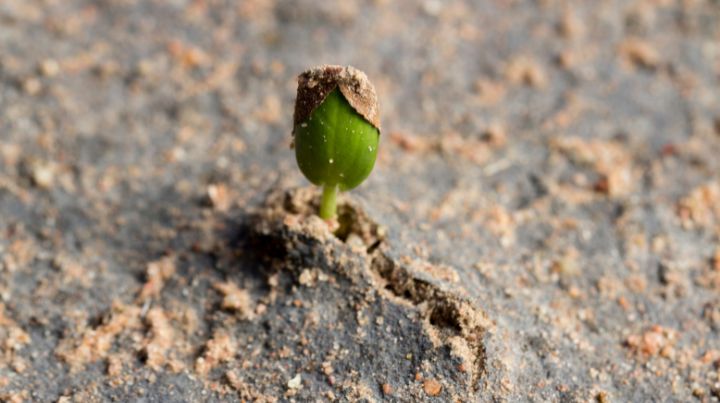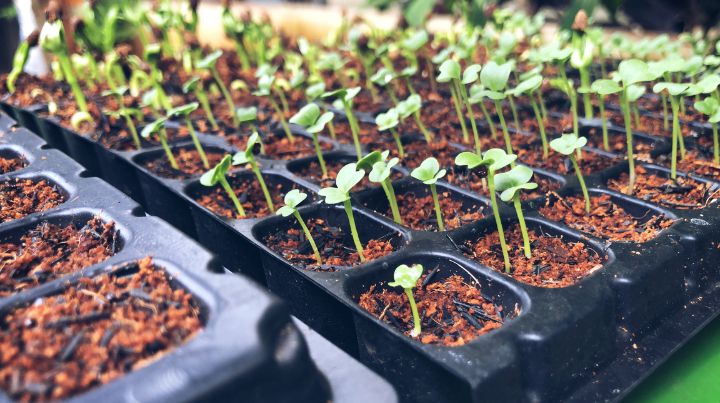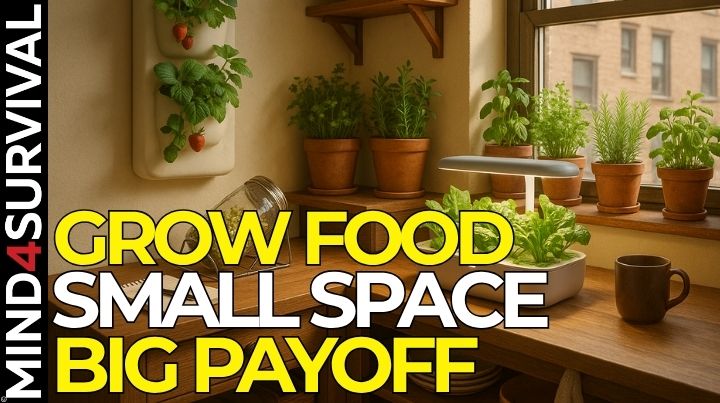Seed Saving: The Prepper’s Primer

Have you become a competent gardener? Are you looking to up your sustainability game? A lot of pieces go into developing an independent food supply, and while very few people in the United States will probably achieve total food independence, a lot of us gardeners are always thinking about what we can do next.
If you have been gardening in the same area for a few years, it might be time to think about starting your own seed bank. Saving seeds and then keeping them organized is a small amount of extra work, but the dividends, in the end, can be significant. Let’s look at the reasons you might want to consider saving seeds and keeping a small stockpile.
Saves Money
Unless you have very limited space, it will probably save you money to start plants from seed rather than buy transplants. Even if you’re only buying two tomato plants for $3 or $4 each, a packet of enough seed for many plants will probably cost $3 or less.
In my experience, seed almost always lasts longer than the packet says. Seed companies have to sell seeds with a certain percentage germination rate; that’s why they sell new packets every year. With older seed packages, the germination rate does go down.
But it doesn’t go down to zero. There is a range between plants, and a high-quality seed supplier like Territorial will often list percent germination for the first year as well as the estimated seed life on their packets. So, for example, if you buy their packet of Black Coco beans listed with an 80% germination rate and an estimated seed life of three years, those second and third years will probably still germinate well above 50%. You might want to plant your seeds a little thicker, but there’s no reason to toss seed packets under five years old.
And while I generally recommend staying more organized with your seed library, if you find an old packet, it can be fun to toss it in the garden just to see what happens. I recently found a packet of radish seeds from 2015 that I’d forgotten about, tossed them in the garden, and most of them germinated. We have been thoroughly enjoying our unplanned radishes.
Tailor Plants to Your Garden
Do you remember learning about Mendel’s peas back in your high school biology classes? Gregor Mendel became the founder of modern genetics through his intense observation of pea plants in his garden. He developed the rules of genetic inheritance, which quantified the way attentive gardeners can select desirable traits in their plants and grow plants best suited to their climate.
If you’ve been gardening in the same area for years and have no plans to move, this can turn into a great practice for you, too.
For example, I live in a windy, semi-arid steppe, and when I first moved here, I had a hard time growing my beloved tomatoes. My cherry tomatoes that did so well on the Gulf didn’t produce much. My big slicers that had grown in the Midwest didn’t produce at all.
However, after two years of very low yields, I tried Principe Borghese, Italy’s famous sun-drying tomato, and those did better. Not outstanding, but better. For years I have been saving seeds from the tomatoes in my garden, and they have continued to produce more every year.
Seed saving only works consistently with heirloom open-pollinated seeds, but if you’ve got an heirloom variety that works well, try saving your own seeds. Over time, the plants will become more adapted to your soil and your microclimate.
Bartering Items
If you have lived in one area for any length of time, hopefully you’ve found neighbors with similar interests. If you are new to an area, showing an interest in what your neighbors do with their properties can be a good way to get to know each other.
When I first bought acreage, I hadn’t known much about managing it other than what I’d read in books. I thought I’d be able to hire help. When my financial situation changed and I couldn’t, I made some mistakes with grazing animals, and they overgrazed the back 2 acres of my property.
Seeing what a mess I’d made, one of my neighbors came over with a bag of buffalo grass (Bouteloua dactyloides) seeds. After the Great Plains had been stripped in the Dust Bowl, farmers and ranchers used buffalo grass to reseed them. It’s somewhat expensive to order, and my neighbors hadn’t had much luck with what they’d ordered anyway, but a lot grew naturally near my neighbor’s office, so she just collected some of that seed. The collected seed worked much better on her property, so she shared that seed to help me establish buffalo grass on mine. I have since made a habit of saving some buffalo grass seed, too, in case of future bare patches.
The ability to be generous, even with seeds, can facilitate interactions and friendships with the people in your community, and bartering with them can be a valuable tool during a disaster.
Maintain Diversity and Flexibility
I’m not going to speculate about who’s to blame for climate change. All I’m going to say is, my area had Biblical levels of drought the past couple of years, and then this year, record-breaking rain and temperatures ten degrees below normal. It’s hard to keep up.
So, my normal planting routine has been utterly thrown off. In some ways, this is frustrating; in a normal year, I’d be stuffing myself with fresh peas right now, but the soil is still so cool that my plants are small. However, the abundant moisture has made it easier to get plants started because I don’t have to babysit the seedlings the way I normally would.
I’ve put in more cool-weather plants. I’ve been able to do this without panic-ordering lots of seeds because I’ve made a habit of keeping a variety of extra seeds in my little seed bank. So I’ve got more kale, lettuce, and radishes this year. Not sure how tomatoes and peppers will work out, but we’ve still got time.
Next Steps
If you feel the need for more specific information on how to harvest and store seeds, I strongly recommend Suzanne Ashworth’s Seed to Seed. This book gives specific instructions on saving 160 different varieties of vegetable seeds. Seed saving is easier in some climates than others; my semi-arid climate is typically pretty forgiving when it comes to drying and storing things. When I lived on the Gulf Coast, however, if I wasn’t meticulous about cleaning and drying everything, my seeds quickly went moldy. That was when I got Seed to Seed and learned how to clean seeds properly.
Keeping your seed library organized is similar to keeping a deep freezer organized. Make sure everything is labeled and dated, and work through your older seeds first. Don’t plan on getting much from anything more than five years old; you might get lucky, but it’s also likely that even if the plants sprout, they won’t be particularly vigorous. You’ll have more consistent results if you have an organized rotation and use most of your seeds within about three years.
Final Thoughts
This may sound like a lot of mental effort to put forth in saving five or ten dollars, but it’s not just about money; it’s about security. There are years when it’s hard to find certain seeds, and if you have favorites, this can be intensely frustrating.
We are also living in a period of economic flux. While five or ten dollars may not seem like much right now, it could be more significant if you are tighter on cash in the future. And when the value of money is shifting, having resources readily available represents a small amount of insurance.
I still buy seeds every year because it’s fun to try new things. But I save a lot of seed and keep a rotating stock for all the reasons listed above. If developing a more self-sufficient food supply is part of your long-term preparedness plan, keeping your own seed library might be a good next step.
Additional Resources:
Related Articles
FREE Guide
Read the Best Seller
Join Mind4Survival
Stay informed by joining the Mind4Survival! 100% Secure! 0% Spam!
Affiliate Disclosure...
Mind4Survival is a free, reader-supported information resource. If you make a purchase through our link, we may, at no cost to you, receive an affiliate commission.
Do You Want To Be Ready No Matter What?

Download our free 39-page guide with interactive, 7-Day Emergency Kit Checklist and take the first step toward real preparedness.
- Know exactly where to start.
- Save time and money.
- How-to build a complete Basic Emergency Kit.
- Level up your safety and security.
Join Mind4Survival
Stay informed by joining the Mind4Survival! 100% Secure! 0% Spam!







